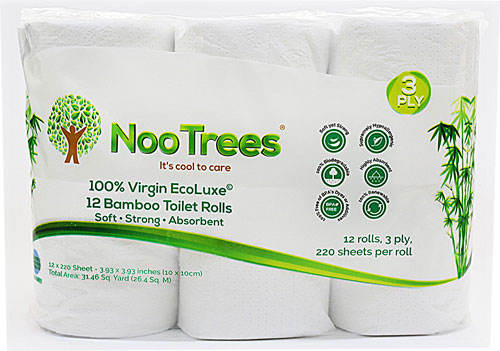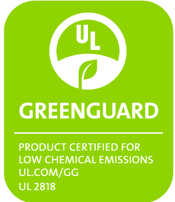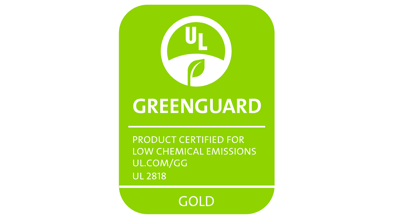
Water | Resources
Performance Fabric
Question from Cheryl
I am interested in buying a sofa from Pottery Barn. There are fabrics available there that are called Performance fabrics. That sounds good because there will be kids and pets and a stain resistant fabric would be great. However, I have to wonder how fabric is treated to be called Performance. Is there a toxicity issue I should be aware of?
Lisa’s Answer
Performance fabric implies that it is stain repellent. According to O Ecotextiles, all stain repellent finishes are based on fluorotelmer chemistry, which means it pertains to chemicals which become perfluorocarbons (PFCs) when released into the environment. There are newer stain repellent finishes that are claiming to be safer and less bioaccumulative. Though safer than older formulations, there is little human data to support just how safe they are. I would steer clear.
Is This Acrylic Lamp Toxic?
Question from Miriam
I generally try to avoid acrylic but my son would really like this lamp for his room that is acrylic. Would you consider this non-toxic?
The description says:
Expertly crafted of acrylic and iron.
Metal parts are finished in Satin Nickel.
On/off switch located on clear cord.
Shade is included and exterior is made of linen.
Interior is lined with polystyrene.
All our shades are designed with an UNO fitter for securing shade to base.
Lisa’s Answer
Wow, that is a cute lamp! Sadly, I would not recommend placing it in a child’s room. We all make choices about the level of toxicity we allow in products in our home, but I consider bedrooms to be the most important room to keep as toxin free as possible, Acrylic is made from acrylonitrile, a special group of vinyl compounds. Scorecard: Chemical Profiles: Acrylonitrile notes that it is a carcinogen.
Also of concern is the polystyrene lining. The EPA consider styrene, which is a primary component of polystyrene, a probable human carcinogen.
Reaction to Shoes
Question from Vanessa
I am desperate for some answers. I have been experiencing the most frustrating “medical mystery” for months now. At first I thought my feet were just dry because I have Hashimotos Thyroiditis, but after many failed attempts at moisturizing with different foot salves, I started to realized it’s got to be something else. My feet, really just my heels, are killing me! I can’t sleep at night because the pain is exaggerated at nighttime for some reason. They have fissures, some so deep, that I can’t walk on them without going on my tippy toes. They are itchy, peeling and driving me nuts! The dermatologist gave me strong steroid cream saying it was eczema caused by contact dermatitis, but what that contact was is still a mystery. I had to do research on my own and I came up with two possible culprits, my Nike Air vapormax sneakers which are worn without socks so my feet have direct contact with the rubber soles and my Lauren Conrad flip flops from Kohl’s, both shoes I wear every day, religiously. Please help me figure out what can be causing this awful pain so I can know what shoes to wear and not to wear from now on. Thank you in advance!
Lisa’s Answer
I am not a doctor so I really can’t diagnose any type of reaction. Take a look at Debra’s List to find non-toxic shoe options. Readers, has anyone experienced these symptoms and found shoes that work?
Magic Eraser
Question from Jen
A friend recently mentioned that she uses a magic eraser to clean her tub and shower-and many other house things like wall smudges, kitchen sink, etc. I keep hearing how wonderful these eraser sponges are but before I tackle some heavy duty cleaning, I wanted to check the safety of them (especially regarding bathtub or kitchen sinks).
Lisa’s Answer
EWG’s Guide to Healthy Cleaning rates Magic Eraser products as a D or F, depending on the variety. The low rating is due mainly to a lack of disclosure of the ingredients.
Certifications: What Do They Mean?
There are so many “non-toxic” certifications in the marketplace today. It can be confusing trying to figure out what they mean and, importantly, what they don’t mean.
The problem with most of these certifications is:
- They are only testing a limited number of chemicals and
- They are only testing the chemicals to an accepted level
In most cases, certifications show that a product may have a lower toxicity than a non-certified product but not that it is completely non-toxic.
Let’s take a look at two common certifications, GREENGUARD and GREENGUARD Gold.
GREENGUARD is a third party certification, which means it is an independent testing company that evaluates products for a fee. The company is transparent about its testing methodology and criteria.
What it Tests
- It tests for volatile organic chemicals (VOCs) and their impact on air quality. See the complete list of criteria here.
- Formaldehyde must be below .05 parts per million (ppm).
- Individual VOCs must fall below 1/10th TLV. The threshold limit value (TLV) of a chemical substance is believed to be a level to which a worker can be exposed day after day for a working lifetime without adverse health effects.
What it Does NOT Test
- This is only a test for chemical impact on air quality. It does not test for chemicals that do not significantly impact air quality but may be harmful to ingest or absorb through the skin such as lead or phthalates.
Overall, this a reputable organization with some of the strictest criteria in the world. You can be assured that certified products have relatively low toxicity, meaning that if you are faced with buying a certified product or a product with no certification it may be a safer bet. It does not mean that it is non-toxic. It is possible that it contains formaldehyde at levels that, when combined with other formaldehyde-containing items in your home, could cause a reaction in sensitive individuals. While there are no standards for formaldehyde levels in homes, according to the American Cancer Society, some people experience health effects when formaldehyde is present in the air at levels higher than 0.1ppm. If GREENGUARD certified products can contain .05ppm and you have any other items in your home that are emitting formaldehyde you could easily reach an unacceptable level.
If you are buying engineered flooring, be sure to ask if it contains phthalates because the GREENGUARD does not test for it.
GREENGUARD GOLD is a stricter certification than GREENGUARD and is designed for sensitive individuals, such as students and the elderly, and is intended for environments such as schools and health care facilities.
What it Tests
- Limits emissions of more than 360 chemicals
- Limits total VOC emission of a product
- Formaldehyde must be below .0073 ppm.
- Individual VOCs must fall below 1/100thTLV
What it Does NOT Test
- Similar to the standard GREENGUARD certification, it only test for chemical impact on air quality. It does not test for chemicals that do not significantly impact air quality but may be harmful to ingest or absorb through the skin such as lead or phthalates.
As you can see, GREENGUARD GOLD limits chemical emissions to a much lower level that the standard GREENGUARD certification. It does, however, have the same limitations because it only measures for the impact of chemicals on air quality.
Vegan Suede Shoes
Question from Joe
I was wondering what your opinion of these shoes im planning to purchase https://wills-vegan-store.com/vegan-dock-boots-mens-tan-vegan-suede.html. When i messaged the company it said the vegan suede was created with polyurethane based materials that are similar to polyester? Are these safe to wear?
Lisa’s Answer
Polyurethane is a safe plastic but it can have additives that are not safe. The company specifies that the suede (but not the entire shoe!) is Oeko Tex 100 certified, so the suede itself is probably fine. The TR outsole, which is synthetic rubber is made from petroleum and can offgass. However, most shoes have this type of sole. I have never seen a work boot with an outsole made of a natural material. The most concerning component is the insole, which is made from recycled rubber. Studies show that recycled rubber, likely from recycled tires, can offgas harmful chemicals. The company is not able to tell the source of the recycled rubber. If the insole can be removed, you could replace it will a natural material. Overall, these boots are probably better than a standard pair of leather workbooks. The company seems very ethically conscious and is trying to be transparent.
Mold Remediation
Question from Catherine
After sanitizing the moldy basement in the house we just bought, remediators want to apply a protectant/encapsulant to seal the surfaces. The two possibilities are Bac-Shield (http://chemtexlaboratories.com/bacshield/) and Caliwel (https://www.caliwel.com/CaliwelIndustrial.aspx). I’m terribly sensitive. What do you think?
Lisa’s Answer
Caliwel claims no VOCs and uses Calcium Hydroxide (lime) as an active ingredient, which is an irritant but not particularly toxic in this application. Here is an older thread that discussing some companies using hydrogen peroxide for remediation. Cailwel does not seem particularly toxic but hydrogen peroxide is safer. As for your personal sensitivity, every individual is different so its impossible to tell what you might cause you to react.
I was not able to find information about Bac-Shield’s VOC content so I would go with Caliwel due to the lack of information.
Thuiram Mix
Question from Catherine
Looking for shoes, sneakers not made with thuiram mix.
Lisa’s Answer
Toxins in Toilet Paper
 We use toilet paper multiple times a day in our most personal of areas. Yet, we hear about scary stuff that could be hiding in each roll. With so many options on the shelves it’s difficult to figure what to use and what to avoid. Here are the toxins to be wary of and a guide to help you choose the right brand for you.
We use toilet paper multiple times a day in our most personal of areas. Yet, we hear about scary stuff that could be hiding in each roll. With so many options on the shelves it’s difficult to figure what to use and what to avoid. Here are the toxins to be wary of and a guide to help you choose the right brand for you.
Chlorine Dioxide
Toilet paper brands made from virgin pulp (not recycled paper) are usually bleached with chlorine dioxide. When you hear or read about chlorine in toilet paper it’s misleading because chlorine dioxide is different from chlorine. Until the late 1990s, pure chlorine, or elemental chlorine, was used for paper bleaching and was a significant source of dioxin. Dioxins, which are persistent environmental pollutants and accumulate in the food chain, are among the most toxic chemicals on earth. The EPA began regulating the paper industry which led North American paper mills to convert from elemental chlorine to chlorine derivatives, such as chlorine dioxide, which are significantly less toxic and reduce the potential for dioxins by 90%. So, today’s toilet paper bleached with chlorine dioxide is safer than the paper produced decades ago with elemental chlorine. Unfortunately, that doesn’t mean chlorine dioxide is safe. It’s strictly regulated by the EPA as a hazardous chemical. And it still releases dioxins into the environment which is detrimental at any level.
This background is important to understand when reading marketing claims on toilet paper packaging. The following acronyms are used by the U.S. Pulp and Paper Industry to describe “safer” bleaching processes. Here’s what they really mean:
(ECF) Elemental Chlorine Free: Paper bleached with chlorine dioxide instead of elemental chlorine.
As we know, elemental chlorine is no longer used in the U.S. to bleach paper products, so this does not mean that products with this label are any safer than others. In fact, we know that chlorine dioxide is still a danger to humans and to the environment. Some brands also claim “Chlorine-Free”. Be wary of this as it can simply mean that they use a chlorine derivative such as chlorine dioxide.
(PCF) Process Chlorine Free: This is used for recycled paper. It means no chlorine or chlorine derivative was added during the production process. Ozone, oxygen or hydrogen peroxide are used for bleaching.
(TCF) Totally Chlorine Free: This is used for virgin paper. Ozone, oxygen or hydrogen peroxide are used for bleaching.
Formaldehyde
Some brands of toilet paper use formaldehyde to make the paper stronger when it is wet.
Formaldehyde is a carcinogen as well as an irritant. One study linked toilet paper to chronic irritation in women. If a brand claims that it is particularly thick, strong, or absorbent, suspect that it contains formaldehyde.
BPA
Recycled toilet paper is made from paper scraps. Thermal paper, such as cash register receipts are a known source of BPA. When they get processes to make recycled paper, trace amounts of BPA can end up in the finished product. A 2011 study found that 80 of 94 toilet paper brands contained BPA. However, for perspective, BPA in toilet paper was detected in microgram-per-gram concentrations while thermal paper receipts were measured in milligram-per-gram concentrations. That’s 1000 times more exposure from receipts than toilet paper!
Fragrances/Lotions
It’s difficult to get companies to disclose all of the chemical additives used for fragrance or added features like lotion. We know that fragrances are often a cocktail of chemicals and sometimes include phthalates, a known endocrine disrupter. Lotions can include parabens, which are linked to hormone disruption and breast cancer, as well as other harmful ingredients. It’s best to avoid any products boasting these features.
Buying Guide
Avoid: Toilet Paper made with Virgin Pulp
Sadly, this is the fluffy, white stuff that most people prefer. If chlorine dioxide, dioxins and the possibility of formaldehyde are not enough to deter you, think of the fact that 54 million trees are harvested per year for toilet paper production.
Better: Recycled Toilet Paper
These brands will likely contain trace amounts of BPA. While it is best to avoid all exposures to BPA, humans are at far greater risk of exposure from food and beverage containers and cash register receipts than from toilet paper. If you choose this option, look for brands that contain 100% recycled content and are bleached with PCF. Some brands do use ECF so look carefully.
It’s worth noting that Seventh Generation openly addresses the BPA problem on their website and are actively working toward solutions. They should be commended for their transparency. Plus, they use hydrogen peroxide for bleaching (which is PCF)!
Best: 100% Bamboo or Bamboo & Sugar Cane Toilet Paper
These brands do not contain BPA because there is no recycled content. They do not need formaldehyde for strengthening because bamboo fibers are naturally strong. Most of them use hydrogen peroxide for bleaching, although some use a combination of hydrogen peroxide and ECF. An added benefit is that bamboo and sugar cane are grasses, not trees, which are naturally renewable.
Do they work?
None of these bamboo and sugar cane brands compare in softness or strength to traditional, virgin pulp brands. However, if you are used to using recycled brands you will probably find these less-toxic alternatives to be good options. Like the recycled brands, they vary widely in appearance and functionality. My family found 2 of the 5 brands we tried acceptable.
NooTrees
This was my favorite in the category. The 3-ply sheets are the strongest of the five tested and did not break down during tough cleaning jobs. It is relatively soft and thick and looks the most like traditional toilet paper.
WHOLEROLL
Also 3-ply, this is soft and strong but not quite as thick as NooTrees.
ECOS
This is not as soft as NooTrees or Wholeroll but it holds up and does an acceptable job.
Tree Free
This did not work for me. It is thin and rough and sometimes crumbles.
Caboo
This did not work for me. It is thin and sometimes crumbles.
Non-Toxic Hangers
Question from Phoebe
I saw an older post about hangers, and I was wondering if anyone has any updated information. I am trying to fin non toxic hangers that will last that are preferably eco friendly as well. I cannot find the Ditto hangers for sale anywhere besides one sketchy seeming ebay seller. Did the whole non toxic, eco friendly hanger movement die? Any recommendations?








